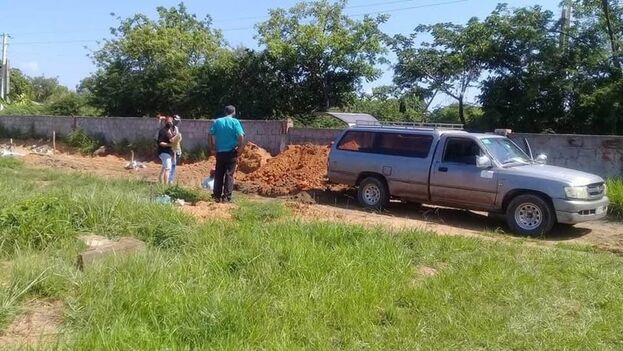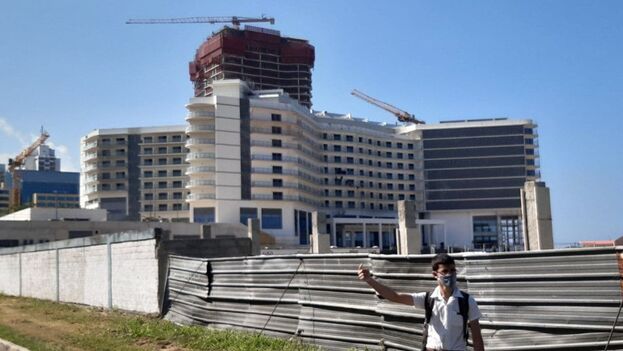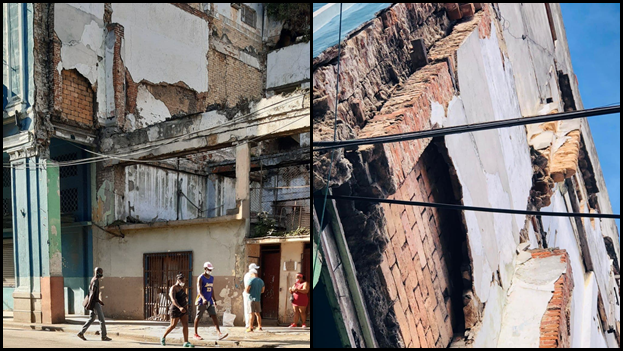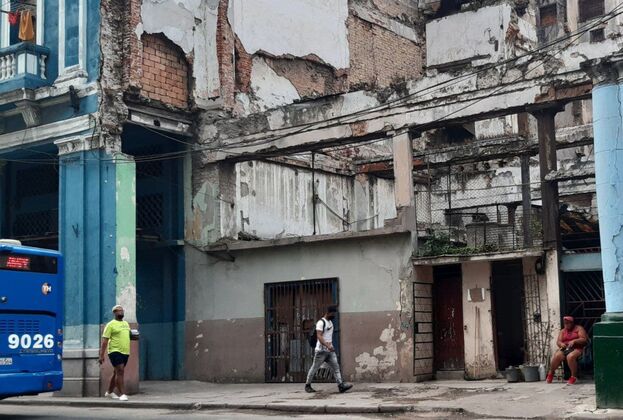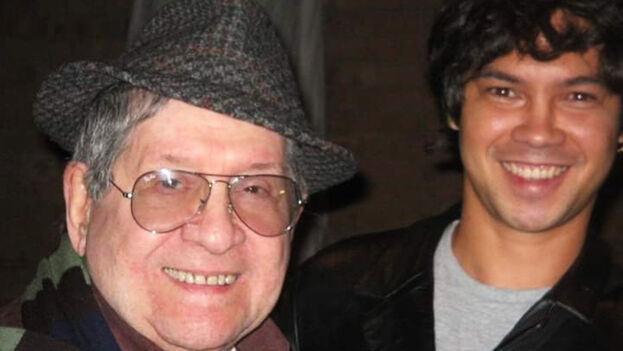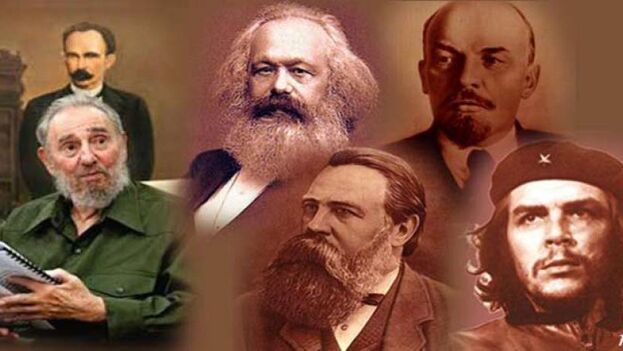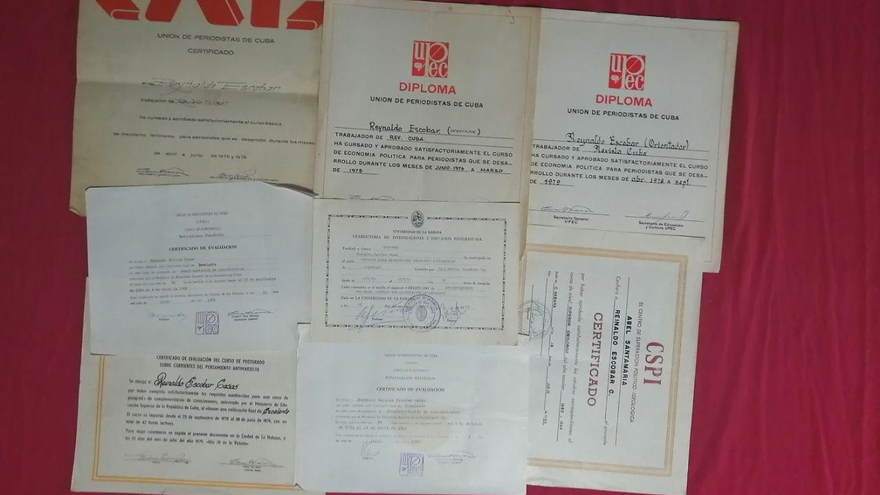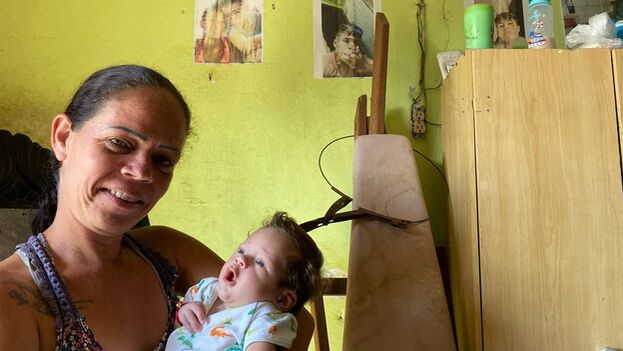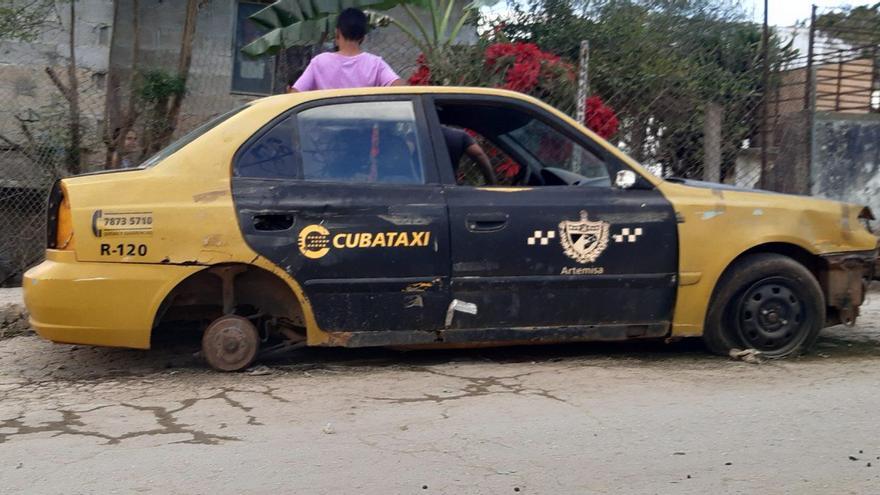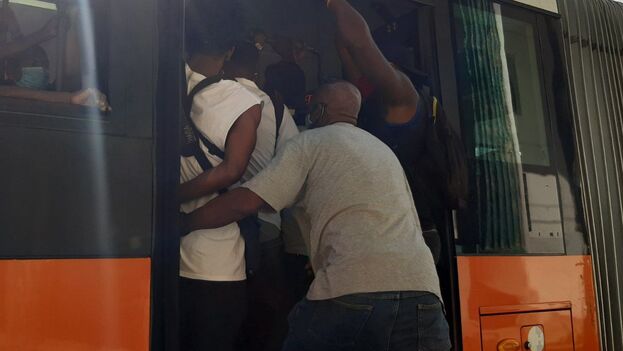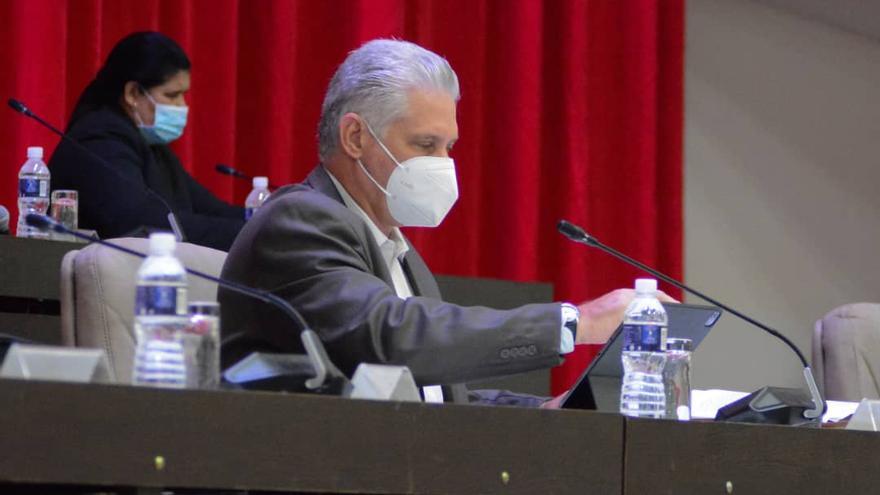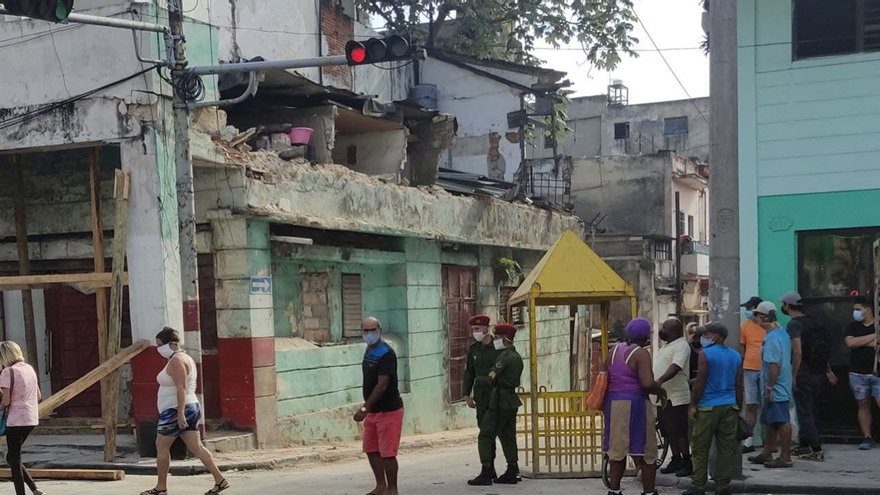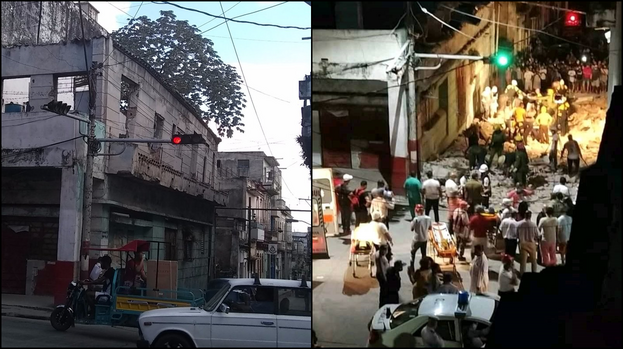
![]() Luz Escobar, Havana, 18 December 2021 — At 9 p.m. on Thursday, December 16th, on the eve of Saint Lazarus Day, Miguel Alejandro Alderete Recio and his 81-year-old mother, Rosalba, were listening to a radio program, El Nocturno at their home. A roar broke the tranquility. A wall of the adjoining house, at the corner of Angeles and Monte streets, had collapsed. Neighbors took to the streets to search for possible victims under the rubble. Ambulances, police and firefighters arrived. They found the lifeless body of a passerby, Rolando León.
Luz Escobar, Havana, 18 December 2021 — At 9 p.m. on Thursday, December 16th, on the eve of Saint Lazarus Day, Miguel Alejandro Alderete Recio and his 81-year-old mother, Rosalba, were listening to a radio program, El Nocturno at their home. A roar broke the tranquility. A wall of the adjoining house, at the corner of Angeles and Monte streets, had collapsed. Neighbors took to the streets to search for possible victims under the rubble. Ambulances, police and firefighters arrived. They found the lifeless body of a passerby, Rolando León.
Alderete is uneasy, he talks about the shock that he experienced at that moment, and both his mind and his body still feel it, his voice too. This Friday, after four in the afternoon, he brewed coffee for a visit and, after saying goodbye, he spoke with 14ymedio about the anguish and disgust that has remained after the collapse.
“I saw it all,” he says, and his hands move up and down in an effort to point out every crack in the ceiling, every dampness, every wall about to collapse. The noise from the central avenue, increased by the work of a crane and dozens of onlookers who still come to see what happened, dies down when one walks through the entrance at Monte 429.
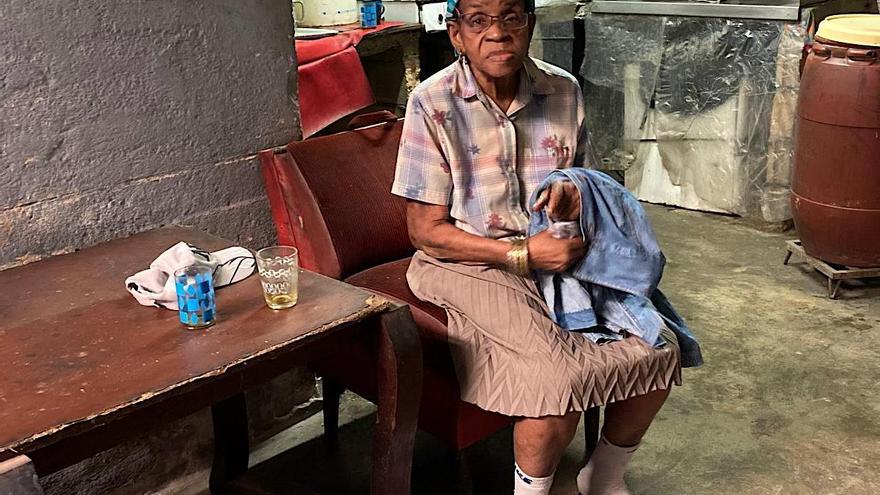
Alderete says that he has been in that place for 16 years, adjacent to the building that collapsed, but he clarifies that, before, he lived in that same corner that collapsed on Thursday night and that, being “up there”, they always had “shelter in place order”, to move to one of those places of temporary accommodation. He remembers that continue reading
As a result of this incident, the authorities took the whole family to a nearby but unventilated place and it was then that they offered to go to where they live to this day.
“When they relocated us in that place, it was like in 2005 or 2006, we had to do an enormous amount of cleaning and enable the premises to barely live there. A year after being here they told us that they were going to demolish the upper part but they did not come until today, after what happened, happened. They did not demolish at the time and look at the demolition now, after there has already been one death,” lamented Alderete.
He also remembers that a bus once collided with a column on the façade and knocked it over completely. “The top of the bus hit the door. Luckily, there was no one there at that time, but a man who stood guard there, who lives next door and his name is Claudio, almost got killed” he said.
He says that as a result of the column that fell “they put two sticks there and until the sun came up today” it was the same. “That was 10 years ago and they never took care of it again… ah! but now that this collapse occurs, they immediately come to remove the old props and put in the new ones, do we have to wait for that?” he wonders. “No, we shouldn’t wait till people die” he answers himself.
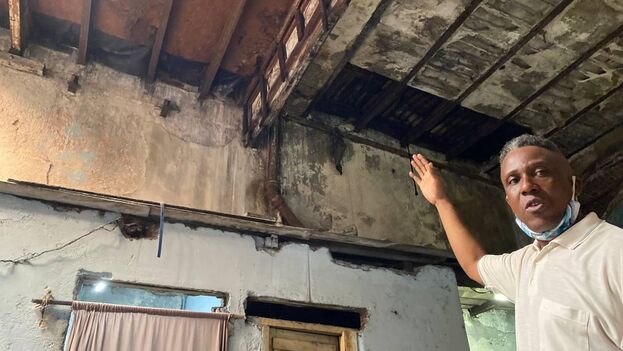
“Then, afterwards they will say that you’re a counterrevolutionary but no, you have to tell the truth. I am stubborn, after the collapse no one has come to hear from us yet, the ones who arrived were the demolition workers but Housing has not come here, I’m very upset”, he says, very angry.
For a moment, his disgust turns into indignation, he would like to express his discontent on the street but he fears for his mother’s health: “Do you know why I didn’t go out to the street? Because of my mother, who is there and yesterday they had to take her to the Calixto García Hospital because her blood pressure was so low, she got very nervous. We felt the noise and I opened the door and went out, so I see the movement and the collapse, after a few minutes they had to take her by ambulance”.
Rosalba, who is listening to the entire conversation from a chair, says: “Before, I lived where the collapse took place, now I feel better, but I got so scared that I had tachycardia.” Her son is very concerned about his mother’s health and the consequences that living in such poor conditions may have for her. “Just like that, my mother will get messed up too, it’s too much, that lady is 81 years old and I’m praying that before she closes her eyes, she is able to see her little house, the only thing I miss is that one day she can live like normal people”.
This man, who has worked at the old Woolworth’s on Monte Street for 28 years, first as a cook and now as a confectioner, does not understand why “we have to wait for Havana to fall down” to make the right decisions. “Those Government people come here to Quisicuaba, and yesterday they were there with Silvio Rodríguez, but nobody has come here”, he criticized, referring to the delivery of the National Community Culture Award to the singer-songwriter, which took place the same day, very close to the collapse.

He remembers when the tornado “completely engaged Havana and they immediately gave shelter to those affected” and he was outraged when he saw on the news that the Diez de Octubre nursing home, which had been closed for nine years, was immediately enabled for 70 families. “Do you have to wait for the tornado to pass to do that? No, that’s totally disrespectful”.
This man does not stare at each crack without doing anything, but he considers that the repairs that the property needs are so extensive that they are beyond his ability. “I have thrown a pile of melts (waterproofing mixture) on that roof to contain the water but it is too much, cracks always appear and the melt lasts a month and then it’s leaks and leaks. I cannot wait for them because it is always the same slobber and they never do anything, it’s too much. ”
“I repeat, because of my mother I did not go out [to demonstrate] on November 15th, for my mother, I did go out on July 11th, and for my mother I did not go out yesterday or today. It is only because of that lady that I refrain, because if I throw myself onto the street, something will happen to her. Until when? One is here, being a good citizen, waiting, and they are doing whatever they want, no, I’m very upset”, he insists.
Translated by Norma Whiting
____________
COLLABORATE WITH OUR WORK: The 14ymedio team is committed to practicing serious journalism that reflects Cuba’s reality in all its depth. Thank you for joining us on this long journey. We invite you to continue supporting us by becoming a member of 14ymedio now. Together we can continue transforming journalism in Cuba.

